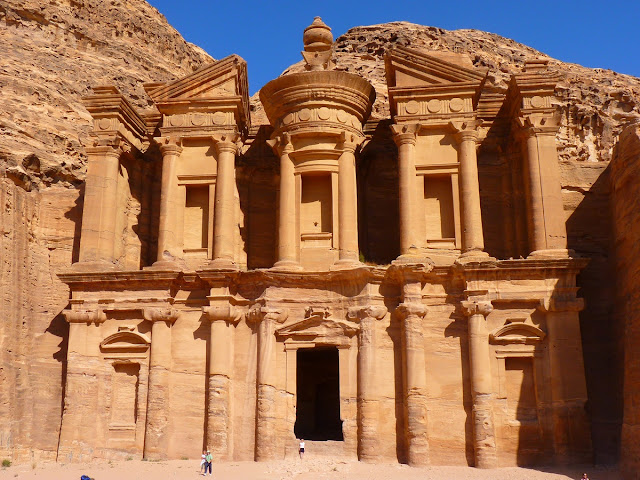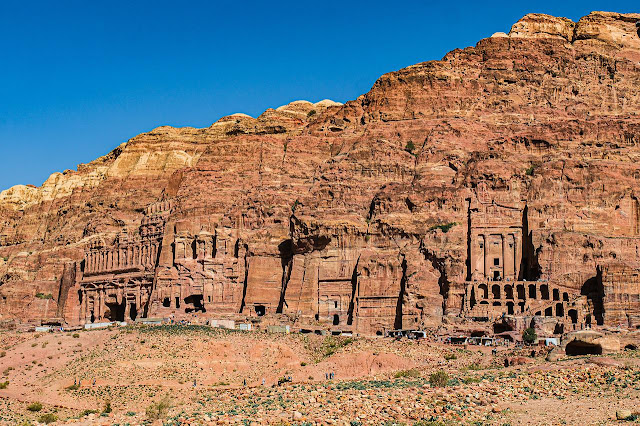Petra, the Interesting History of a City That Was Once Lost
Seeing a city whose buildings are made of stone and is on a cliff wall of course only exists in films. However, it is not true. Such a stone city really does exist in the world. The stone city is located in the "Rose City" of Petra in Jordan. Petra began to be known by many people when this site was included in one of the new seven wonders of the world in 2007.
Located in southern Jordan, the historic archaeological site in Petra is one of the most visited places in the country.
The stunning ruins are built into a sheer rock face in the mountains that stretch along the Dead Sea and the Gulf of Aqaba.
If historians and archaeologists are correct, the ruins of Petra were built thousands of years ago by a group of Arab nomads who chose the location because of its location along a prosperous trade route.
Petra is approximately 233 kilometers from the Jordanian capital, Amman. The travel time from there is about three hours. Currently, Petra is visited by many tourists from all over the world because of its uniqueness there.
The site can be visited from a multitude of regional cities and countries, and tours are available in half-day, full-day and multi-day options.
Raqmu or Raqēmō, takes on a role in the historical course of Jordan. (Wikipedia.org) They are residents who inhabit historical sites, precisely in stone forts, magnificent exotic buildings in the Petra region.
Geographically, Petra is in the region bordering the Jabal Al-Madbah mountain, in a basin surrounded by mountains that make up the eastern side of the Arabah valley, stretching from the Dead Sea to the Gulf of Aqaba.
The area around Petra has been inhabited by Raqmu people since 7000 BC. The inhabitants are also included in the Nabataean civilization that has existed since ancient times in the Jordan and Middle East region.
Around that year (7000 BC), some of the ancient farmers are the earliest recorded inhabitants to have settled in Beidha, a Pre-Pottery Neolithic settlement north of Petra.
The Nabataeans were one of several nomadic Bedouin tribes that roamed the Arabian Desert and moved with their livestock wherever they could, to find pasture and water.
Archaeological, religious and linguistic evidence confirms that they were a northern Arab tribe. Current evidence indicates that the Nabataean name for the people of Petra was Raqēmō, spelled in various manuscripts as rqmw or rqm.
They are ruled by five kings, one of which is King Rekem. Experts mention that the city, which was called 'Petra' by the Greeks, was one of the highest ranked civilizations in Arabian lands.
Al-Siq To Treasury Trail
This trail is the most visited route in Petra, this trail starts from the Petra visitor center via The Siq to The Treasury. While most tourists think that the trail ends at the ancient city's main attraction, The Treasury, the main trail continues past the Siq, the Royal Tombs, the Lined Road and ends at the Qasr Al-Bint (Palace of the Maiden).
Duration: This depends on the pace of the tourist but can take up to an hour from the visitor center to the Ministry of Finance.
Petra in the Night
Visiting Petra during the day is amazing; experiencing it at night by the light of 1,800 candles is simply awesome! Walk through the ugh the Siq to the Treasury (Al-Khazneh) following the candlelit path and enjoy the haunting music of Bedouin in the Treasury. Tour trips start at 8:30pm and usually end at 10:00pm every Thursday, Wednesday and Monday. Give yourself plenty of time to walk around the Siq - don't miss the show!


No comments:
Post a Comment